
Brahmos Missile
World’s Fastest Supersonic Cruse Missile By BrahMos Aerospace
The Brahmos missile is the fastest medium-range stealth ramjet supersonic cruise missile jointly developed by India and Russia. The BAPL (BrahMos Aerospace) is a joint venture company of the Defense Research and Development Organization (DRDO) based in India.
The Brahmos is a fire-and-forget weapon system designed to neutralize a wide range of targets with pin-point accuracy. It provides multi-platform launch capability, allowing it to be launched from aircraft, ships, submarines, or land-based vehicle-mounted mobile launchers.
The Brahmos missile is the fastest supersonic cruise missile in the world, developed in a joint venture between the Indian Defense Research and Development Organization (DRDO) and the Russian Federation’s NPO Mashinostroyeniya, which together have formed BrahMos Aerospace.
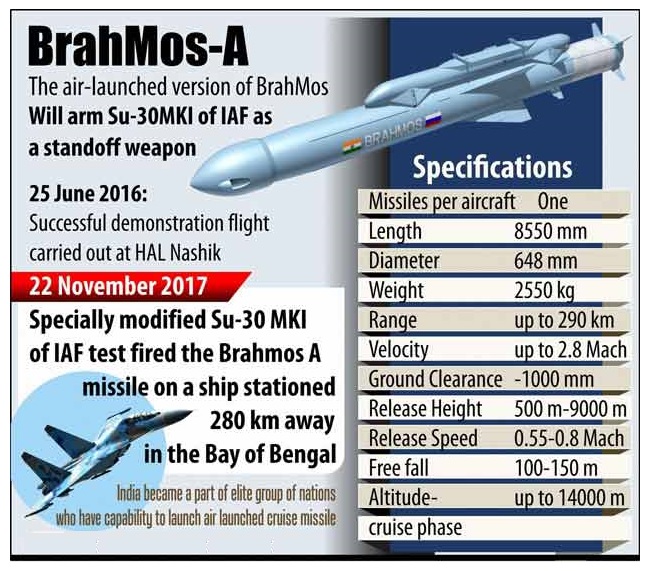
The induction of Brahmos is a complete game changer for the Indian Armed Forces. The missile, due to its stealth features, is very difficult to track, and its Mach 3 supersonic speed leaves very little reaction time to deploy the countermeasures.
The DRDO is constantly upgrading the lethality of the missile in terms of speed, range, and stealth features. The air-launched variant of the Bhramos missile has been primarily designed for the Su-30 MKI fighter jets operated in large numbers by the Indian Air Force (IAF).
This integration of Brahmos on the Su30 MKI is already complete and has been successfully tested a number of times, hitting the targets with pin-point accuracy. The DRDO is also currently working on other lighter variants that can be integrated on single-engine fighter jets such as the HAL Tejas.
BrahMos Missile General Features
BrahMos Missile | |
Missile Type | Supersonic Cruse Missile |
Manufactured By | BrahMos Aerospace |
Unit Weight | Land Based - 3,000 kg (6,600 lb) Air Launched - 2,500 kg (5,500 lb) BrahMos NG - 1200 kg (2600 lb) |
Missile Length | 8.4 Meters , ( 28 ft ) BrahMos NG - 6 Meters , ( 20 ft ) |
Missile Diameter | 60 cm , ( 24 inch ) BrahMOs NG - 50 cm , ( 19.2 inch ) |
Unit cost | $ 4.85 Million - Rs 34 Crores Each |
Warhead | Conventional And Nuclear |
Flight Altitude | Sea Skimming - 3 To 4 Meters |
Engine | First Stage - Solid Rocket Booster Second Stage - Liquid Ramjet |
Operational Range | 290 Km To 700 Km |
No Escape Zone | 30 Km |
Guidance System | Mid-Course : Inertial Navigation System |
Maximum Speed | Over Mach 3 |
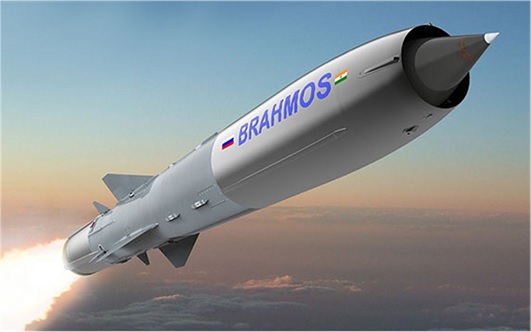
Brahmos Missile Design Features
The missile design is based on a two-stage solid propellant booster engine. The first stage is fired first, which gives initial lift-off and takes the missile to supersonic speed before it is separated. The second stage is fired after the first stage, which takes the missile to Mach 3.
The missile design is based on the Russian P-800 Oniks supersonic anti-ship cruise missile used by the Russian navy. The DRDO has incorporated cutting-edge technology and many advanced features into the missile design. It is said to be the world’s fastest anti-ship cruise missile currently in operation.
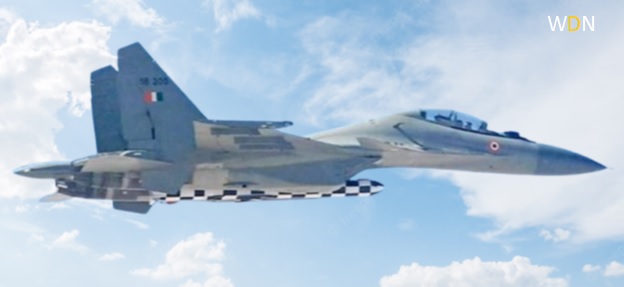
The land-based, vehicle-mounted, and surface-launched variants of the Brahmos missile are already in service. An air-launched variant of BrahMos started testing in 2012 and entered service in 2019. However, only the Su30 MKI airframe can support the heavy weight of the missile.
The DRDO is developing a hypersonic version of the missile, BrahMos-II, with a design speed of Mach 7. The hypersonic variant will significantly boost the aerial fast-strike capability of the Indian Air Force. It is expected to be ready for testing by 2024.
Brahmos Stealth Technology
The Brahmos missile design incorporates the latest stealth technology, artificial intelligence (AI), a sophisticated guidance system, and advanced embedded software to provide the missile with unmatched capability and advanced features.
The missile has a flight range of up to 290 km with supersonic speed during the entire flight, which brings a substantial reduction in the missile’s flight duration.
The shorter flight time and supersonic speed over Mach 3 are a lethal combination that provide a huge combat punch to this missile. The missile’s features and speed make it almost impossible to track and engage with any known missile defence system currently available in the world.

BrahMos Missile Variants
The DRDO and BrahMos Aerospace are working on a number of variants of the Brahmos missile, considering the requirements of the Indian Air Force, Indian Army, and Indian Navy. The DRDO is also incorporating the latest cutting-edge technology into the future design.
The Brahmos NG is the next-generation, light-weight (1500 kg) variant of the missile. The NG variant is specially designed for single-engine fighter jets such as the HAL Tejas. Similarly, the hypersonic variant of the Brahmos is also currently under development.
BrahMos-II is a hypersonic variant of the cruise missile currently under development. It will have a range of up to 600 kilometers and a speed of Mach 8. It is going to be the fastest hypersonic missile in the world.
BrahMos Variants | Platform | Missile Details | Status | Picture |
Surface-To-Surface Variant | Ship-Launched Anti-Ship Variant | Anti-Ship Missile capable of sinking large size ships inclusing aircraft carrier. S | Operational | |
Surface-To-Surface Variant | Ship-Launched Anti- Ship Variant | Anti-Ship Missile capable of sinking large size ships inclusing aircraft carrier. | Operational | |
Surface-To-Surface Variant | Land-Launched Land Attack Variant | Land Attack Missile capable of distroying large size heavily fortified land targets | Operational | |
Air-Launched Variant | Air-Launched Anti-Ship Variant | Anti-Ship Missile capable of sinking large size ships inclusing aircraft carrier. | Operational | |
Air-Launched Variant | Air-Launched Land Attack Variant | Land Attack Missile capable of distroying large size heavily fortified land targets | Operational | |
Submarine-Launched Variant | Submarine-Launched Anti Ship And Land Attack Variant | Anti Ship And Land Attack Missile capable of distroying large size Ships And heavily fortified land targets | Operational | |
Air-Launched Variant Brahmos NG | Air-Launched Land Attack Variant | Light Weight Variant For Anti Ship And Land Attack Missile Specially Designed For HAL Tejas And Other Single Engine Fighter Aircrafts. | Under Development | |
Brahmos Hypersonic | Air-Launched Anti Ship And Land Attack Variant | First Hypersonic Variant of Brahmos For Anti Ship And Land Attack Missile Specially Designed wide range of launch platforms. | Under Development |
Brahmos NG
Next Generation Brahmos Missile
BrahMos is a supersonic cruise missile jointly developed by India and Russia. It is considered one of the world’s fastest cruise missiles and has a range of around 300 km. The missile is named after the Brahmaputra and Moskva rivers in India and Russia respectively.
As for the next generation of BrahMos missile, the developers are currently working on the BrahMos-NG (Next Generation) missile, which is an advanced version of the existing BrahMos missile. The BrahMos-NG is expected to be smaller, lighter, and more manoeuvrable than the original BrahMos missile, making it even more lethal and difficult to detect.

The BrahMos-NG will have a range of around 450 km, which is an improvement over the existing BrahMos missile’s range. It is also expected to have a higher speed than the original missile, with a reported top speed of Mach 3.5.
The BrahMos-NG will also feature advanced guidance and navigation systems, making it more accurate and able to hit targets with greater precision. It will also be capable of engaging multiple targets simultaneously, making it an even more formidable weapon.
The BrahMos-NG is expected to be a significant upgrade over the existing BrahMos missile, and it is expected to become operational in the next few years.
Strategic Significance Of Brahmos Missile For India
BrahMos missile is a key component of India’s defense strategy, providing the country with a potent deterrent against potential adversaries, long-range strike capabilities, and a high degree of versatility.
It has also helped India develop its indigenous defense manufacturing capabilities and expand its strategic partnerships. The BrahMos missile holds immense strategic significance for India, for several reasons.
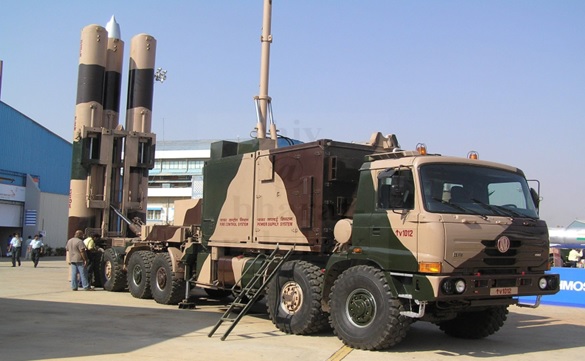
- Deterrence: The BrahMos missile is a potent deterrent against potential adversaries, particularly those who may pose a threat to India’s national security. With its high speed and accuracy, the missile can hit targets deep within enemy territory, making it a formidable weapon.
- Long-range strike capability: The BrahMos missile has a range of around 300 km, which gives India the capability to strike targets far beyond its borders. This makes it an important weapon for power projection and to defend against potential attacks.
- Versatility: The BrahMos missile can be launched from land, air, and sea-based platforms, giving it a high degree of versatility. This means that it can be deployed in a wide range of scenarios and can be tailored to meet specific operational requirements.
- Indigenous development: The BrahMos missile has been jointly developed by India and Russia, but a large part of the missile’s components are manufactured in India. This has given India the capability to produce high-tech weaponry domestically, which is a significant strategic advantage.
- Export potential: The BrahMos missile is in high demand from other countries, including Vietnam, Indonesia, and the Philippines. This provides India with an opportunity to expand its strategic partnerships and enhance its defense exports.
India Sold BrahMos Missiles To Philippines
Philippines has signed a contract with India to purchase BrahMos missiles, making it the first international customer for the missile system. India has already delivered first few consignments of the missile and Philippines navy personnel has already undergone training in India.
This is a significant development for both countries, as it underscores India’s growing defense ties with Southeast Asian countries and reflects the Philippines’ efforts to modernize its defense capabilities in the face of growing security challenges in the region.
The acquisition of the BrahMos missile system will give the Philippines a potent weapon against potential threats in the region, particularly China’s assertiveness in the South China Sea. The missile’s high speed, range, and accuracy make it a formidable weapon, capable of hitting targets deep within enemy territory.
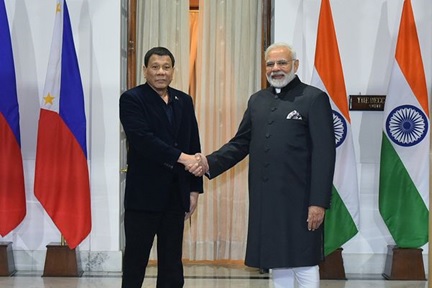
Regarding the possible deployment of the BrahMos missile in the South China Sea, it would depend on several factors, including the Philippines’ defense needs and threat perception, as well as the broader geopolitical context of the region. Any such deployment would likely be viewed as a provocation by China and could escalate tensions in the region.
The sale of the BrahMos missile to the Philippines reflects India’s growing defense exports and expanding strategic partnerships in the region. It also highlights the Philippines’ efforts to enhance its defense capabilities and deter potential threats in the region.










